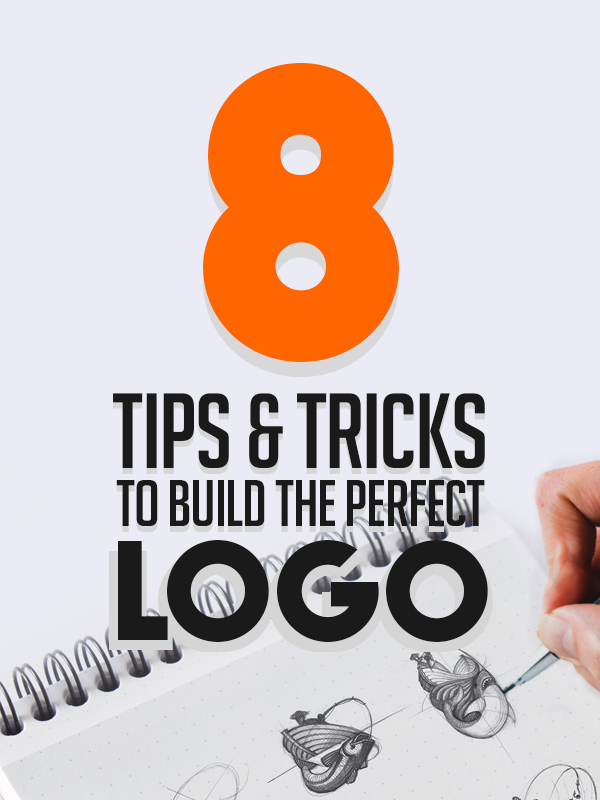You may not have given too much thought to the importance of a logo to your business. It is how you identify your company and product. A logo is a powerful communication tool. It can help establish your reputation and differentiates you from your competitors.
Pay attention to the process of coming up with the perfect one. There are some tips and tricks to building the perfect logo. That is what we will share with you in our article below.

1. Have a Good Understanding of Your Brand
The first step to building the perfect logo is having a good understanding of the brand. Understand it in the market context within which you are operating.
You need to know who you’re talking to and the right messaging to use. Think of it much like you would a person. Look at factors like brand ideology and personality.
How do you want the market to view your brand? Are you sensitive, aggressive, or laid back. Are you looking to evoke certain emotions within your target audiences? Do you have a story behind your logo? Whatever elements you choose to work with must reflect your brand appropriately.
2. Communicate with Visual Icons and Color

The advantage of using visuals is you do not need to say so much more. Look at communication around holiday destinations. You will see depictions of sunny days or beaches.
It brings to mind the ultimate relaxation and peace. The right images will help communicate your brand personality without too much effort.
Pay lots of attention to the colors you use in your logo. It can contain more meaning than you may be aware of. Allow yourself to explore the range of palettes available. You must, however, practice moderation so that it does not end up looking tacky.
Very bright colors, for example, are attention grabbers. They can, however, look unprofessional depending on how you use them. The FedEx logo above is an excellent example of moderation in the use of color.
Think about the different applications you will have for your logo. You should be able to use your logo in grayscale and single-color versions. Marketing demands for Logo applications are different. Create room for versatility and flexibility.
3. Embrace the Use of Technology
Modern graphic designers utilize all manner of tools and online resources. While before, the designers would depend on pen and paper.
Now with technology, there are so many tools available. A good laptop or tablet for graphic designers can help with the process. You get efficiency and a quick turnaround for a project that would take a long time.
4. Distinguish Your Brand From the Competitors
Create a unique logo that allows you to distinguish your brand from the competitors. Challenges may present in coming up with something truly unique.
Desist from recreating what already exists. Many brands are guilty of playing it safe. They take an existing logo and tweak certain aspects. Eventually, it can confuse the target audiences.
5. To Include or Exclude the Company Name

Many companies struggle with whether to include or exclude the company name in the logo. Some companies have managed to do it quite well. Coca-Cola and IBM immediately come to mind. You can get away with it if your company name is quite unique.
If not, you need a distinguishing factor so that the target audience can identify your brand with ease. Be careful of the font you use. Stick to those that look professional so that you do not weaken your logo. A good graphic designer can customize existing fonts to make them unique to you.
The advantage of including the company name is you get instant publicity for your company. Target audiences will not need to research further to know the company name. You save on marketing costs because you achieve effective advertising without spending extra.
6. First Impressions Matter

With a simple glance, the target audience should be able to identify your logo. Think about Nike, Mercedes, and Toyota, for example. Even those who do not use the brand will recognize them anywhere. The logos are simple and communicate the brand very well.
Simplicity avoids the use of too many elements in the logo. The fonts should be easy to read. The use of color is minimal, and the shape is not complicated. You realize they are also unique without trying too hard.
The result is the logo that you will remember for a very long time. Such logos also stand out when you use them for merchandising purposes. The logo on a banner, t-shirt, mug, or vehicle branding becomes more visible. Look how the Nike swoosh looks fantastic on that trouser in the picture above.
7. Go For Clean Designs With Empty Or Negative Spaces

Less is more should apply to coming up with your logo designs. It means embracing minimalism by applying extreme moderation in the use of elements and colors. Empty spaces give a clean look and allow your logo to stand out so much more. It will also make branding so much easier when you’re coming up with your marketing merchandise.
8. The Design Should Allow for Gradual Transformation

If you look at the original logos for some of the big brands, you will notice a gradual transformation. Pepsi is an excellent example of one such brand.
You want to allow yourself such leeway. It is imperative the more your business grows. Whatever you are doing must, however, be gradual. You do not want to go back to the drawing board with your brand building initiative. Yet, if you confuse people with sudden changes to your logo, you could lose your customers.
Final Thoughts
We have looked at eight tips and tricks to build a perfect logo. Remember, it is about communicating your brand to the target audiences. Keep it simple, clean, and take advantage of the resources available to come up with your logo.